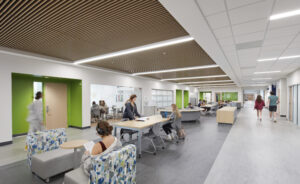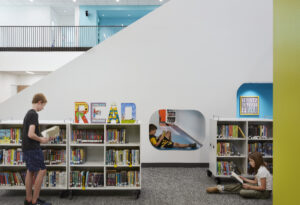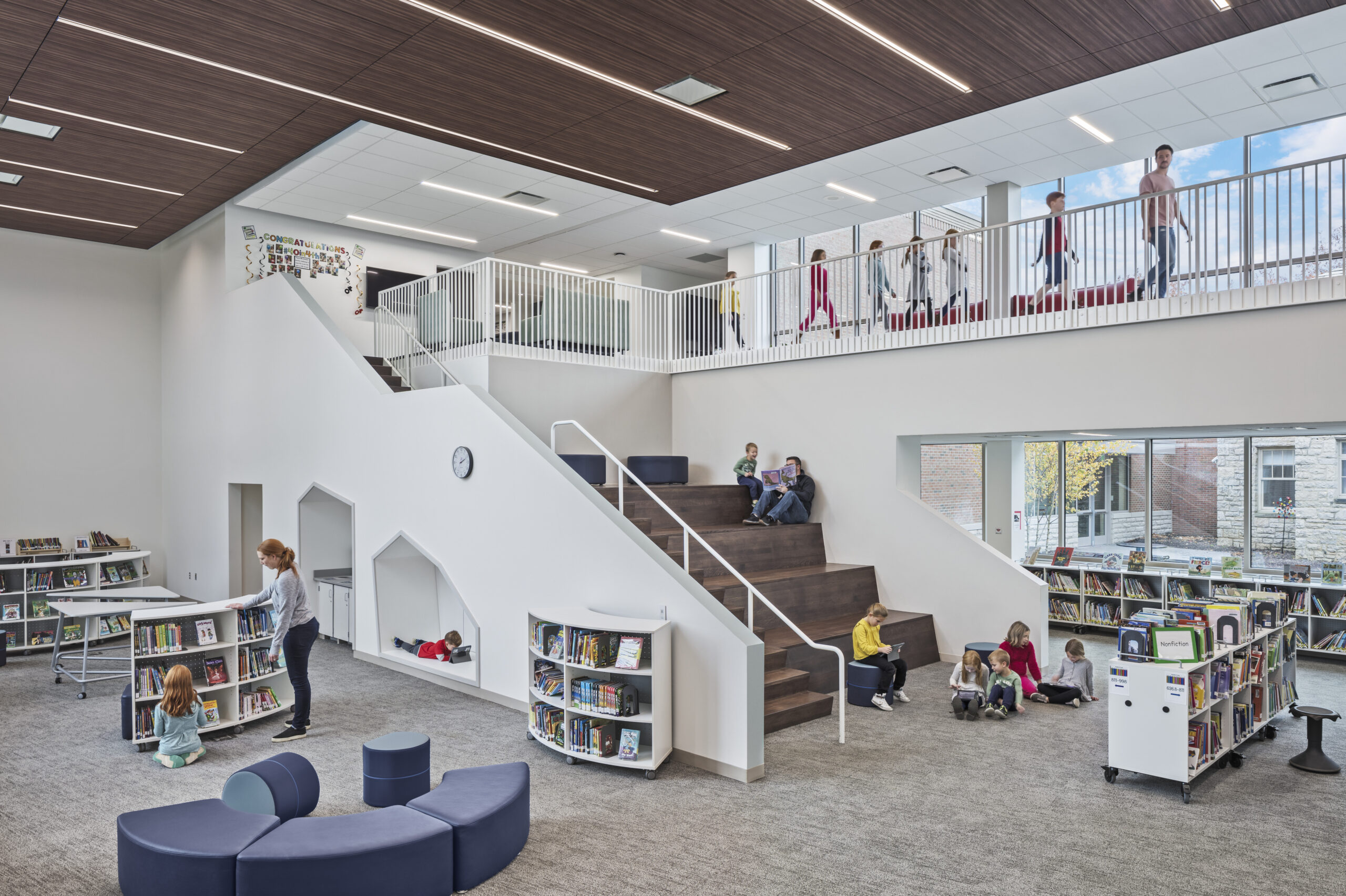By Debra Kolesar, NCIDQ
As the world evolves and new stressors are introduced into students’ lives, learning spaces must also evolve to provide the best support. Wellness rooms, calming corners, or quiet zones are designed to enhance the student learning experience, particularly for students impacted by trauma or with emotional needs as well as those who require diverse spaces to remain engaged. These calming zones are essentially safe spaces for students who benefit from an alternative to traditional education environments, allowing for more flexible learning by providing a quiet, comfortable space for students to reset when they’re feeling energized, anxious or overwhelmed.
The Need for Wellness Spaces

Photo Credit: Mark Herboth
Students face a variety of stressors brought on by social or academic challenges, home contexts, or other factors, which are often exacerbated by social media and can impact a student’s overall wellbeing and academic success. Since the Covid-19 pandemic, mental health concerns in students have only worsened. According to the National Center for Education Statistics, as of April 2022, 69% of public schools reported an increase in mental health concerns among their students.
A designated space for reflection and relaxation such as wellness spaces or calming corners can help foster a more positive and focused learning environment. Incorporating these spaces into learning environments can lead to decreased negative behavior, improved overall mental health and more empowered students by providing opportunities for students to self-regulate.
Every school is different in how leaders approach student wellbeing. This can vary due to access to resources. However, whether a school offers mental health resources or not, it’s clear that student wellbeing is a high priority for every school, administrator, teacher and counselor.
Key Elements for Effective Calming Spaces
There are various elements to consider when designing effective calming spaces in schools, from location and furniture to lighting and technology.

Photo Credit: Mark Herboth
Within the classroom, calming corners are being integrated by creating a quieter area separate from where instruction takes place with soft seating options or privacy chairs. Soft seating options provide a sense of comfort and help regulate emotion, while privacy chairs offer acoustical privacy and aid in concentration, helping instill a sense of calm.
Both privacy chairs and reconfigurable or modular furniture accommodate the need for personal time without requiring complete isolation. Some students may be provoked by loud noises or get distracted easily if sitting too close to another student. Building more flexibility into a classroom or other learning environment through furniture allows students to maintain connection with the rest of the space and fellow students while taking the time they need to decompress or focus on their own. Another way to accomplish this is to build more openness and connectivity into classrooms. Garage-style doors, sliding doors or pivoting doors enable classrooms to open to surrounding spaces, including common areas that provide seating options for individual work or a personal break while still being in view of teachers.
It is also important to include quiet spaces within an open collaboration area, allowing students to self-select the space that feels best. Incorporating nooks within communal areas provides spaces for quiet reading or personal reflection while maintaining a sense of connection to the overall layout. For example, the underside of staircases is often underutilized space that creates the perfect setting for nooks or tunnels. At Windermere Elementary in Columbus, Ohio, a built-in tunnel under the learning staircase provides a private setting while also connecting both sides of the room. At Barrington Elementary, also located in Columbus, Moody Nolan took a different approach, creating a reading niche on the sides of the learning stair. This approach offered a similar semi-private experience that provides students with a moment of reprieve.
For full separation, wellness rooms provide a retreat for emotional regulation. Wellness rooms are typically within or near the guidance suite. While many schools partner with outside providers for mental health prevention, some schools might not have access to psychologists, social workers or outside providers. In that case, wellness spaces might be located near the administration office or school clinic—or within a classroom community. Either way, wellness rooms should be located in a private area where students can feel safe.
Elements of a wellness room require careful attention. It’s important to include comfortable seating, dimmable lights to support the body’s natural circadian rhythm, a sound system for relaxing white noise, and a color palette that is reflective of nature, such as blue, green and purple. All of these aspects promote relaxation and reduce anxiety. Acoustics are another important factor to consider. The acoustical ceiling should have a minimum .70 Noise Reduction Coefficient, and acoustical wall panels can be installed to enhance sound insulation. Rubber is an excellent choice for flooring, as it helps reduce noise and is easily maintained.
Read more about size considerations and see more project images in the March/April edition of School Construction News.
Debra Kolesar, NCIDQ, is a senior interior designer at Moody Nolan in Columbus, Ohio.


